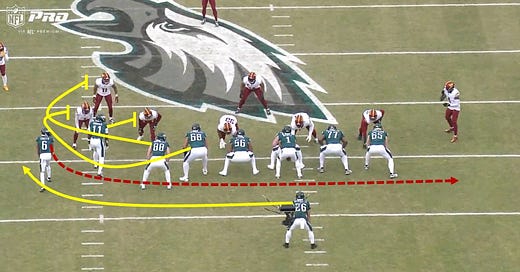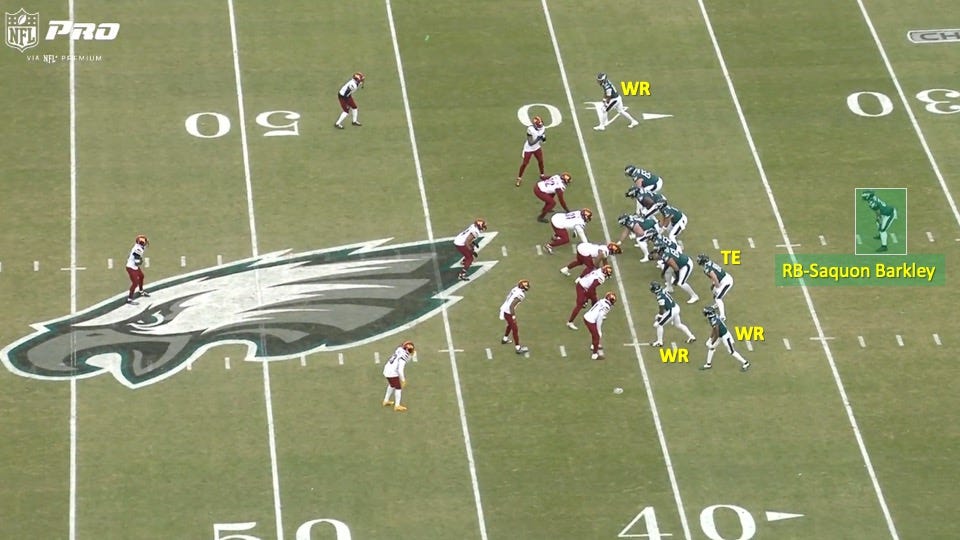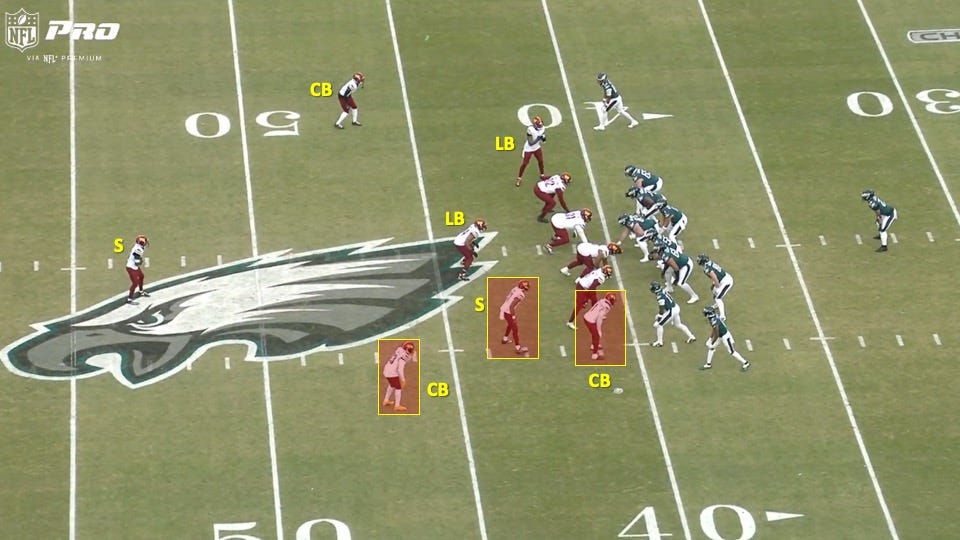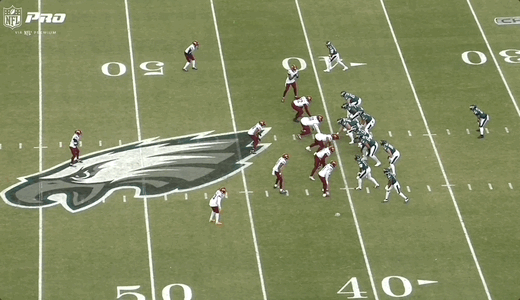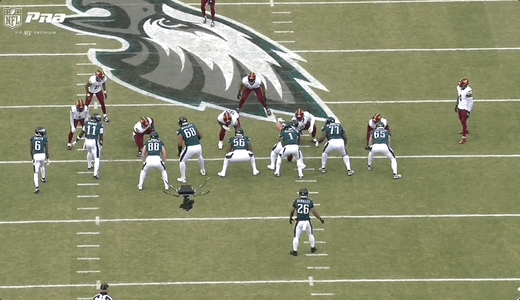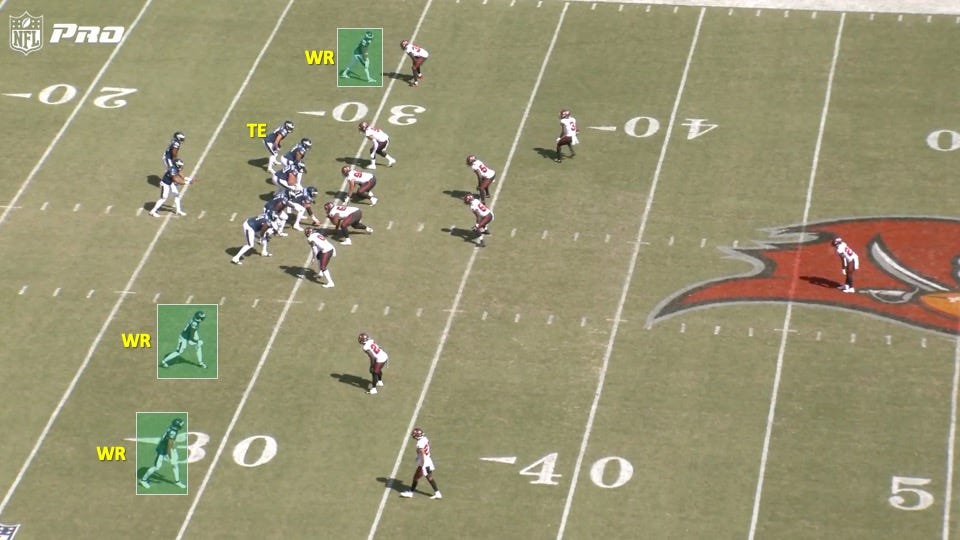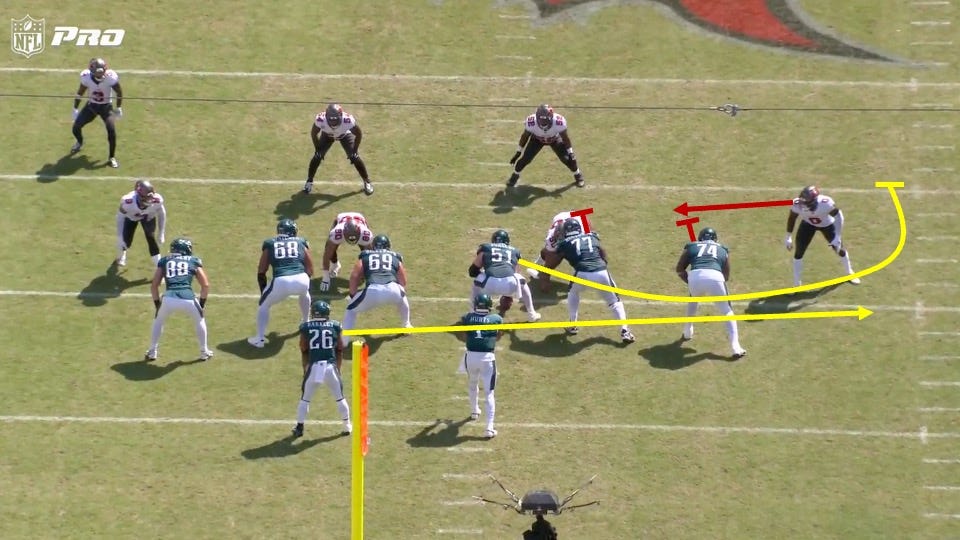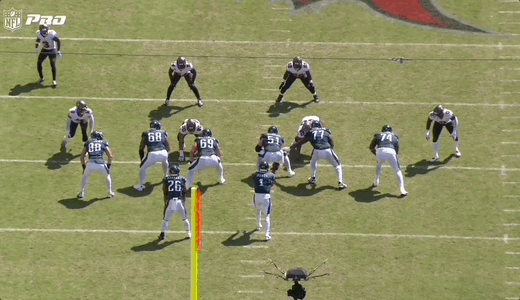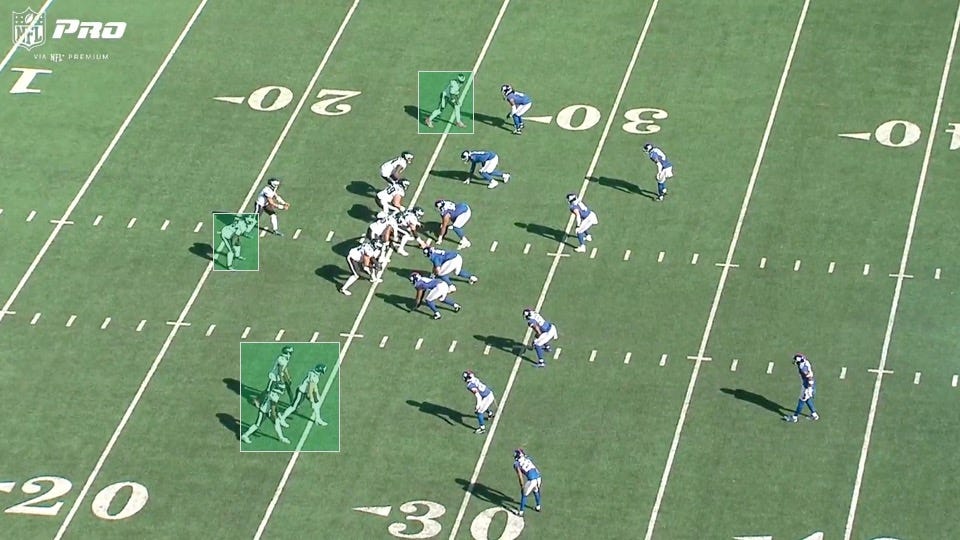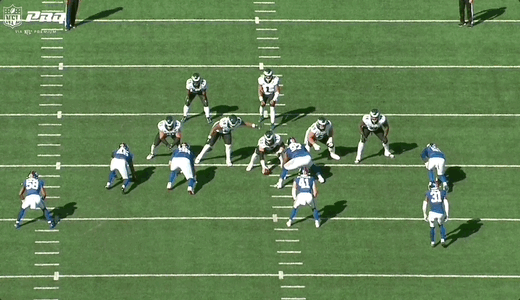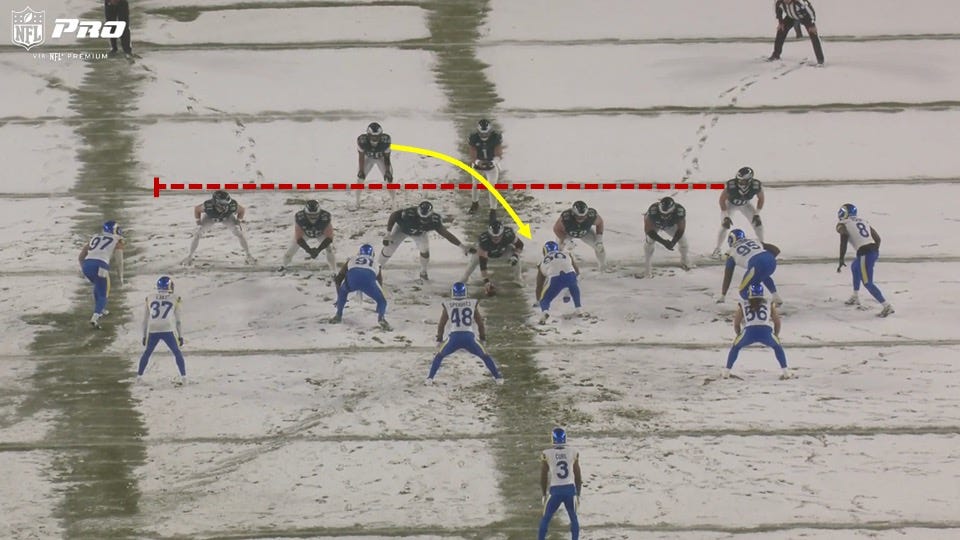Saquon Barkley and the Eagles’ run game have been special this season. They’ve been the backbone and sustaining part of their offense while also providing an explosive element that is a threat to take it to the house from anywhere on the field.
Including the playoffs, Barkley has 7 touchdown runs of 60 yards or more, the most 60-yard TDs of any kind in a single season in NFL history. He also led the league in 10-yard runs during the regular season.
As with any dynamic run game, there are multiple factors contributing to its success.
Philly’s offensive line has athleticism and size, and they’ve been outstanding all year. In fact, the Eagles ranked 2nd in the NFL in yards before contact per carry during the regular season.
While some of that metric is attributable to the quarterback-run game and Barkley’s ability to make defenders miss, it still reflects how great the O-line has been at setting Saquon up for success.
Combine their blocking with Barkley’s vision, lateral quickness, and burst, and you have a run game that’s gone from very good to nearly unstoppable.
The Eagles do rely on certain staples or bread-and-butter runs, although it’s a pretty diverse run game in general. While they are predominantly a zone-running team, they mix in plenty of gap scheme. And according to NFL Next Gen Stats, they ran the ball inside vs. outside the tackles at almost the exact same rate this season.
Getting Barkley to the Perimeter
The Eagles don’t necessarily need to get Saquon to the outside for him to break a big run. But they do make an effort at times to get him to the perimeter by design.
Let’s start with his 60-yard touchdown run on the Eagles’ first play of the NFC Championship Game against the Commanders. First, notice the personnel and formation. The Eagles were in “11” personnel (1 RB, 1 TE, 3 WR’s) and a tight trips-bunch to the left:
The Commanders matched up in nickel personnel (5 DB’s). But take another look at their alignment. To the 3-receiver side, they had two cornerbacks and a safety over Philly’s 2 wide receivers and tight end:
This was a hint that they might be playing man coverage. More notably, the Commanders had nothing but light personnel to that side.
Hurts spotted it and got the Eagles into “the right play” at the line, as he said afterwards. This is something we’ve seen him do a good job of in this run game:
To take advantage of Washington’s lack of size to that side, the play he changed it to was a crack-toss off of a fake jet sweep:
The jet motion by DeVonta Smith removed cornerback Marshon Lattimore from that side of the field, creating a little more space:
The pin-and-pull then enabled the Eagles to get tight end Dallas Goedert (#88) on a safety (#11 Jeremy Chinn) and left tackle Jordan Mailata (#68) on a cornerback (#1 Noah Igbinoghene):
Defensive end Dante Fowler (#6) tried to spin out of the crack block by wide receiver A.J. Brown, and in doing so, he collided with linebacker Bobby Wagner (#54). Barkley was successfully sprung to the outside, and then he did the rest:
What a way to start the NFC Championship Game.
The Eagles use a variety of tactics to create space and get Barkley to the outside. Often, they’ll spread the defense out with their formations and use pin-and-pulls with center Cam Jurgens (#51):
Here’s another example against the Giants. This time the Eagles spread the defense thin with a 4x1 alignment:
The Giants had to account for the quads side. The Eagles then ran it in the other direction with Jurgens pulling again and getting matched up on a cornerback. Also pay attention to the great block on on the safety by A.J. Brown:
Big Plays on Inside Runs
But as mentioned earlier, the Eagles don’t need runs specifically designed to get Barkley on the perimeter in order to get explosive plays on the ground. They’re just as capable of doing so from between the tackles.
Just check out this inside zone with split-flow action (a common tactic in the Eagles run game):
Watch Rams defensive end Jared Verse jump inside when Barkley took his initial path up the middle:

